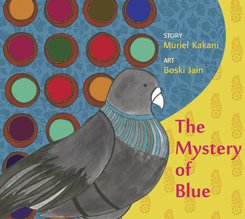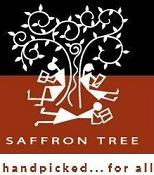BOOK REVIEW: The Mystery Of Blue
Author: utbt5 Jul 2011
The Mystery Of Blue, By Muriel Kakani, Art By Boski Jain, Publishers: Tulika Books, Ages: 6 – 9, Picture courtesy: tulikabooks.com. Review written for Saffron Tree.
Have you read Sivakamiyin Sabatham by Kalki? If not and if you can read Tamil, you can read the whole novel here. Sivakamiyin Sabatham is a historical fiction by Kalki, written in 1944, for over a period of 12 years, in four parts and 209 chapters. It truly is a master piece and one of the main reasons I want my kids to learn how to read Tamil, is for them to read Kalki’s work in its original form. No, this is not a review of Sivakamiyin Sabatham. But there is a point behind this digression.
The one line story is, ‘The Pallava prince avenges the Chalukya king who kidnapped his love, the dancer Sivakami.’ How did the Chalukya king manage to kidnap Sivakami, the Pallava prince’s lover, in the middle of a siege with the whole Pallava army watching? The answer to this is, Sivakami’s father – a gifted sculptor sneaks out of the Kanchi fort, with his daughter and willingly takes refuge with the Chalukya king because he is tricked in to believing that the Chalukya kings knows the secret of the permanent natural dyes used to create the Ajantha paintings! So great is the imaginary character’s desire to find out how the natural dyes were created in the 2nd century BC, that he walked out on his benefactor, in to enemy camp and thus offsetting a series of events in Kalki’s imagination!
The novel leaves the reader wondering, how did so many colors exist in India? How were they created? How were the primary colors extracted? Were the vegetable dyes treated specially for them to last through the centuries? If the dye pigments were extracted from the flora unique to a specific region, how were the same primary colors extracted through out the country? Was the knowledge about the dyes and the extraction process freely shared or was it kept under lock and key?
These are the questions explored in Muriel Kakani’s, The Mystery Of Blue. The story is narrated by little Kunku from the village of Ilkal. Kunku’s father and mother are dyers and weavers like the thousand other people in their village. As Kunku describes how her mother makes different colors from one pigment, one cannot help but wonder the scientific process behind dye making! Also one is filled with awe how the people in old times lived with a deep understanding of nature and the numerous experiments they had to go through to isolate the pigments. Kunku’s world is filled with orange, red, maroon, purple and pink. One day, Kunku, inspired by the blue shade on her pet pigeon Chandrakali’s neck embarks on the journey of making blue. See how nicely the author touches on the possibility that the artisans were influenced by the colors they see in nature?! How Kunku and Chandrakali manage to make blue is the rest of the story.
The illustrations are rich and captures the essence of the story. As the story proceeds the warm earthen tones give way to the cool blue, stately indigo, royal purple and soothes the eye. The block print patterns are gorgeous.
We have owned this book for two weeks, but I have read it as a bed time story many many times. The children are enjoying the beautiful illustrations and are learning how the ancient Indians worked scientifically and in unison with nature. I am not complaining.


 (No Ratings Yet)
(No Ratings Yet)
4 Responses for "BOOK REVIEW: The Mystery Of Blue"
My parents have read that book in Tamil and dad often feels that he should have taught me and bro tamil just to read Sivakamiyin Sabatham and Poniyen Selvam (Have I got that name right?) in Tamil..because the translations, it seem, pale in front of the original 🙂
UTBT SAYS: Yes R’Mom, you have the names right. And yes, though the translations are good, I prefer the original.
Thank you for sharing this with us 🙂 Great to know that this book is being read over and over and the visuals are being looked at enjoyed equally.
UTBT SAYS: Thanks for stopping by Tulika.
“one of the main reasons I want my kids to learn how to read Tamil, is for them to read Kalki’s work in its original form.” Exactly my thoughts!
I’ve read ‘Ponniyin Selvan’ and loved it to bits. Next in line, I need to lay my hands on ‘Sivagamiyin Sabatham’. Kalki’s works are wonderful master-pieces that one should never miss.
UTBT SAYS: As interesting as PS. Do read it.
Lovely review ….
Incidentally have been collecting sarees from different regions … Ilkal sarees, my mom recently bought for me 🙂
UTBT SAYS: How cool is that CA!!! Sarees from every region must make a lovely collection.
Leave a reply